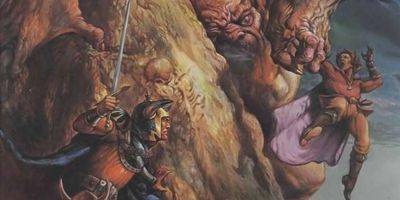D&D's Most Iconic Rule Changed The Game's Combat Forever
There are many rules that tabletop RPG fans might consider iconic to , ranging from the natural 20 critical hit, to a cleric’s Turn Undead ability, but the addition of Opportunity Attacks redefined the flow of combat more than anything else in modern. Prior to the rule’s inclusion, the tactical complexity of battle was severely reduced, largely a function of opposing static numbers on a character sheet and a monster’s stat block. Opportunity Attacks made grid-based combat more rewarding, while significantly adding to the relevance of a melee-focused frontline.
The Opportunity Attack rules – referred to as Attack of Opportunity in some editions – were originally introduced in a supplement to the somewhat controversial 2e system, but fans typically associate the rules with 3e where they became a part of the core rules in the. Fourth Edition kept the rule, but removed the limit on the number of Opportunity Attacks a character could make per round. Opportunity Attacks are still a fixture of 5e, though they have been weakened, triggering only when a character exits an enemy’s threatened squares, not for each square of movement within them.
Normal opportunity attacks do not stop movement, though specific features like the 4e fighter’s Combat Superiority, and many 5e barbarian characters’ favoriteFeat, Sentinel, can change that. Opportunity attacks still make the decision to move away from a powerful melee attacker something to weigh carefully, even when they do not prevent fleeing. Prior to Opportunity Attacks, melee characters could easily close with vulnerable targets like spellcasters and archers unless the battlefield was too narrow to allow for it. A ranged character with a sufficient movement rate or a speedy mount could “kite” enemies, much like an old-school MMORPG.
Though 4e focused more on «powers» than simple attacks, characters still had reason to optimize their Melee Basic Attack at-will power, with Feats like Melee Training for characters that were not







